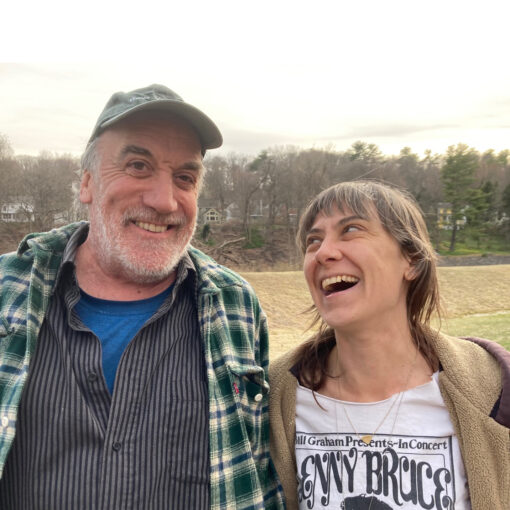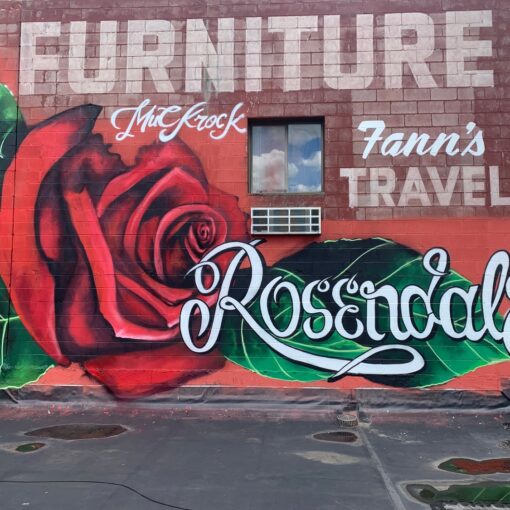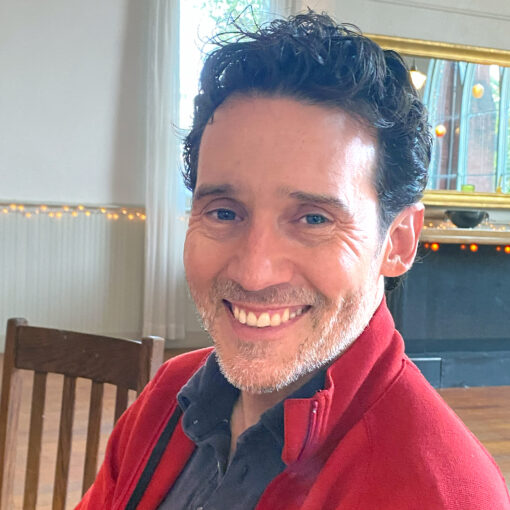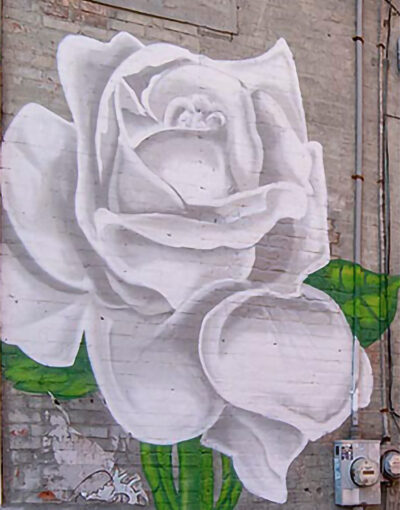May 13, 2024
K: Jeanne, how did you end up coming here to live here?
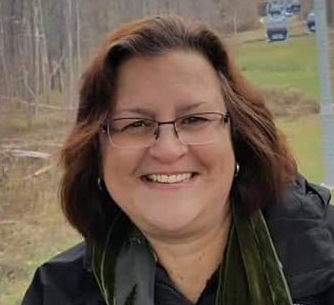
J: Well, I grew up in both Rosendale and High Falls. So I really have always lived in a five-mile radius. Okay, I’ve never really moved very far.
K: Were you born here?
J: I was born, uh, born in Kingston Hospital.
So my parents at that time lived in Rosendale and Lawrenceville Road.
My grandmother had a house there.
And my parents had an apartment there and they lived there when I was born.
And then my father bought a house in High Falls Park.
So we lived in High Falls Park till I was about six years old.
We went back to Rosendale again for a couple of years while he built a house on Berme Road in High Falls.
And so I lived there until I was 19.
That was my parents’ home.
And I moved back to Rosendale, lived a short time in Cottekill, had an apartment there, and in Rosendale.
And then Jack and I got married.
We lived on Mountain Road, we lived on Green Street, and we lived on Brown Avenue, and then, we lived at Hidden Valley Lake.
So, always within that short radius.
K: So you’re, you’re entire kind of.
J: Yes.
And both my grandmothers lived in Rosendale.
So even when I lived on High Falls, my weekends were often spent on Main Street.
My grandmother lived on Main Street.
So, going to the theater, going to Vaughn’s for my comic books and going to Bill Martin’s for an ice cream, that kind of thing.
That was our weekends and hanging around town and with the same kids you went to school with.
So, I went to St. Peter’s school when I was little.
And then at sixth grade, I went to Rondout and then graduated from Rondout Valley in ‘76, then went to Ulster.
And then pretty much not too long after that, I got married, had two kids, raised them in Rosendale, and they’re still at Rosendale too.
K: Do you have a sense about how and why your family, like your grandparents, were here?
J: Well, my mother, my father’s family moved here from Brooklyn, and he was a young adult, and he was still living at home, but before he got married and stuff.
And then they had six kids in the family, and they all moved into the house in Lawrenceville.
And then my grandmother, my mother’s side of the family, they lived in Binnewater at the Women’s Studio Workshop, was their family home.
J: My mother lived there, because it was around the war time, and after the Depression, and you had my mother, my grandmother, my great-grandmother, and my great-great-great-great-grandmother all lived in the house together.
K: Really?
J: With grandmother’s husband, so my mother was kind of raised mostly by her grandmother, and she lived right across from the railroad station.
And my mother told stories about how her mother would have a little soup kitchen, and she used to feed the hobos – they lived on the train pretty much, and there was no place to eat, so she would feed people.
My grandmother, from my mother’s side, worked at Vaughn’s.
She worked waitressing at Vaughn’s, because there was a counter, a luncheonette.
And then, yeah, so that was, so it’s pretty much been here all this time, right?
K: And, like, five generations lived in the women’s studio workshop.
J: It was one of the buildings there, I don’t know which one, it might have been the one to the right of their house, of the big building.
K: And, and there was, she did a kind of hobo soup kitchen.
J: Yeah.
K: That’s an incredible story.
J:Yeah.
It was pretty cool.
J: And very strong women.
You know, my mother, she spent a lot of time at Williams Lake, Mr. Williams raised horses as part of it.
So the kids in the neighborhood, my mother being one of them, got to ride the horses if they took care of the horses.
So my mother used to take care of the horses in exchange for getting to ride the horses.
So that was kind of like her thing.
K: This is fascinating.
There’s a lot of questions here, but that’s, to me, like hearing that your whole, all the way back, how many generations? Four, five generations for you.
J: Right. They came from Brooklyn, I think the depression made the move up here.
My, I believe the story was that my grandmother’s mother had a restaurant in Brooklyn and they fed people until they could no longer feed people anymore. Eventually, they said they had to give up the restaurant. I think they already had the place here and they came up here to stay.
K: So that’s like a kind of amazing story about the heritage of Rosendale that I’m sure many people don’t even know. The idea of the relationship of the train and the hobo and feeding.
In your experience growing up here, how would you say that reflects the ongoing spirit of Rosenale? In other words, do you still see how that’s alive now or how has that impacted your professional experience here?
J: Well when, when the Williams, as Flora knows the Williams Lake Project came along.
I had grown up constantly.
The stories of my mother being there and knowing the hotel and everything that went on there.
So to me, it felt like that needs to continue.Something needs to continue there.
So I felt supportive of that. I wanted to see the next generation still have that facility there and still see it continue.
I was supportive of a redevelopment when you see things start to go to seed.
And, and that kind of ties into what my husband and I did with the Main Street projects that we did as things started to deteriorate on Main Street.
My husband especially got very concerned about his kids growing up in that kind of environment.
And we we approached the town.
We talked to the people that handed out grants.
Do you think it’s, it’s becoming like an underprivileged area?
What can we do to make it better?
And there was nothing available.
If you didn’t live in Newburgh or Kingston, there was nothing for the rural areas for revitalization.
So my husband took it upon himself to buy up a building, renovate it.
And then buy up another building, renovate it and basically ended up doing five buildings on Main Street.
When, and a couple of them were near, they were really ready to be condemned.
So I felt it was very important to the town, and then bringing back the street festival.
For about four years, Jack and I kind of ran the street festival…
K: Oh, yeah?Really? You had a sort of initiator, you had an initiating role in bringing it?s
J: Yeah, Jack, my husband did. I just did the background stuff and took the application.
You know, I, we had a special phone in our house just for the street festival at that time.
Back in the days when everything was done by fax, you know.
That was really important to Jack and I supported him in that he wanted to revitalize Main Street.
You know, a couple of buildings we did were try to make them look again like they were part of that old feel of that.
K: You see it, the architecture then prevails that feeling of saloon while the upper porches, right?
J: And that, that was the one building that’s where the tattoo parlor is.
The totally different facade and we brought it back to look just like the other buildings and where the Soy is. We did that building.
The one next to the between the cafe, that one next to the cafe we did.
And then of course the building at the other end of the street, which was where we had the bike shop. Do you remember that?
L: I do remember that. So we have a listing agent. Brian Cafferty
J: So my brother, Tom, Tom LaFara, wanted to open a bike shop.
He was a bike enthusiast so we had that one building.
We said, let’s renovate that.
And the one side was really a storefront that had belonged to the Mastros for generations.
So we renovated that building and made it into a bike shop.
And so we did that for, I don’t even remember how many years.
And then eventually Christian took over the shop and moved it to 32.
But yeah, so that was pretty much… And then Jack did, Margaret Ryan owned what is now.
L: Pilates studio.
J: No, the, the building.
Yes, that’s where she lived.
But she owned the building.
Where Elizabeth has her, her shop.
So he renovated that for her too.
So that ended up being five places on Main Street that went from being like falling down, looking you could look in the one.
The building that’s now the Soy, we took nine dump truckloads of garbage out of the backyard.
And same thing with the ones behind what was the town hall and they had that garage back there and there were cars embedded in the ground and old washing machines and things like that.And we cleaned all that up.It was really, really run down at that time.
That was my husband’s passion to bring Main Street back to what it had been.
K: Is he a builder?
J: He’s electrician by trade. But that was doing all these things.
That kind of got us involved in doing that.
I was approached by some people on the board: would I like to be on the planning board?
I was appointed the planning board in 2002.
Did that for 10 years until I decided to run for office for town supervisor in 2011. So I’ve been supervisor since.
L: So I’d like to jump in there. Like when you thought of taking that running for office, what was your?
J: Well, Laura, you probably know better than anyone. Because you know that I was kind of vilified when I was on the planning board for the project happening next door and because I had an offer and you were my realtor at the time, people got it in their head that I had some kind of plan to help approve the project and I should of course remember at that time there was no application before the planning board.
It was just that some developers had shown up, the town board called me up and said, we need a planning board member to go to a meeting to meet them.So I did along with a couple other people that were in boards and commissions. But the story got out that I was meeting with them secretly. And that wasn’t really true.
L: Was this at the Williams Lake?
J: No, it was that it was in the rec center, we met.
K: And what was the property?
J: It was Williams Lake?
K: Oh, I see.
J: The Williams Lake division.
K: Got it.
J: So people got people that were against the Williams Lake project.
Decided to go against me as a planning board member, which I did end up recusing myself,
not because I had the interest, because by then the offer had been pulled.
You know, I didn’t have the offer anymore, but I would have recused myself as soon as
an application came before us, but we didn’t have an application. You know, instead, there was a lot of stuff. So it made me so then when the project when I had recused myself from
the planning board, I just didn’t like the way things were going. And I said, I guess I have to run.
And I kind of was like, who’s going to run? Is somebody going to run for office here? And then I was like, I guess I have to run. That’s when I decided to run for office.
I mean, there were other things too, but I had just moved to the hidden valley lake and I wasn’t doing any other job at that time. I was just probably mostly doing property development. And I said I could do this. I could fit that in so then I did not realize how much time it was going
to take at that time because when I came into office, there was so much that had to be
done and I literally was working 70 hours a week.
L: and the kids weren’t that old.
J: No, they were. Yeah, they were, let’s see.
L: No, they were like, no, they were maybe just college?
J: They were in college.
So that’s where it’s like, okay, they’re I don’t have babies anymore. You know, I can do this.
And my historically had always felt like my first job was taking care of my kids. So once I felt like that they could take care of themselves.
So then I decided to run for office and this has been a pleasure to do this job, but but I’m getting to that point in life when probably should start slowing down a little bit, but the beginning years were very, very tough because we had to put many, many hours it was not unusual for us to be
working till 10 or 11 o’clock at night to try to correct some really, really serious issues that came up that we had to take care of violations and stuff like that that had to correct and put in put the
things in place to make sure that those would go away.
K: I mean, when we were here last time, you went through quite an enormous recounting of a lot of the achievements that you’ve had.
And I will continue to say this to you, Jean Walsh. It should be somewhere noted in some more public way what your legacy is.
J: Oh, thank you. Well I got teased in the beginning because I was like the infrastructure supervisor because as soon as I came in, I just started to realize how, how poor the infrastructure was, how serious, I felt Rosendale was in trouble because infrastructure repairs and renovations that need to be done were put on the back burner for too long. Sewer plant, water plant, water lines, the pool just thing. We had a town hall that wasn’t adequate. We couldn’t fit everybody in there.
You know, literally every office was desk-to-desk. You know, you didn’t have any privacy to have a conversation. And we didn’t have enough room to put everybody. We had to rent space in a couple of other locations to be able to accommodate all the offices. So in this opportunity to take over this building, we had to jump on it because it was so important to have the right amount of
space and to be able to provide the services, you know.
So one thing leads to another where you start to say this needs to be done, that needs to be done, and you just have to roll up your sleeves and do it, you know.
L: Really think that momentum. Yeah, I remember going to Nora’s office. There wasn’t a place to open out the maps.
J: It had to be it was just, it was really just getting by just getting by. It was really marginal.
J: You know, I mean, when I took office the water and sewer districts were in a horrible, horrible condition. It just, people just didn’t have a clue. It’s not something you walk in. You don’t walk into the water, look at the water filtration plant, you know.
K: Yeah, but you’re very aware when there’s muddy water coming out or the water closes
or something, you know.
J: Right.
We were very lucky to have Terry there, Terry Johnson, who kept things running on the
shoe string, but putting together things, band-aid things together. But as soon as I took office, he’s like, yeah, we need to fix things. And I was like, okay, take me for a tour. And when he did, I was like, okay, what do we have to do to get things in place, you know, fix things here. And I got a picture up there of the old plant, old water plant and the new water plant to see the light, those blue. That’s the plant. It was just literally water was squirting out over the place.
L: Terry was awesome. His reports were amazing.
K: Just thinking about you personally, but also it’s hard to not also recognize your
way in which your history and family lineage, as well as your professional life has been
tied up with Rosendale. But for you, Jeanne, what would you say, if something was lost here, like, or didn’t happen, that would fundamentally change the character of Rosendale, what would you say?
J: Well, I mean, there are so many things, but I would say that I really felt it when we built the new pool. Because there were some people, they don’t get involved, but some people didn’t want to see money spent, and I understand that.
You know, nobody wants their taxes raised, and I understand that. But I raised my kids going to that pool. You know, they took their swim lessons there, and they were on the swim team,
and we went there for recreation, and we had lots of events there. And the playground was somewhere we went every day when they were little, and I said it’s an asset to the town. We don’t just bury an asset. You have to take care of an asset. You have to take care of it, and make it, keep it so that it’s functional. And to take away that pool would have been a huge loss to the community.
And so we worked hard to find the funding. We were able to bring in … the pool cost $1.7 million to build, and we only wanted to build, and we only ended up with a $600,000 debt. Because we got grants other funding that I was able to put towards it so that we have a small debt, and in 2026 the pool will be paid off.
So, it was totally worth it to make that investment and have that asset. And we have so many visitors, we do so much for the kids in this community. Not only is it a place for people to go to recreate, all the teenagers in the community that get summer jobs, both it improves our camp experience for kids. So, I think it’s a great, important asset.
And the same thing could be said about this building even though it belonged
to the school district, it’s the community’s building. And it would have just sat here and rotted, and we said, oh, no, this is an asset. This is something that’s already had tax dollars invested in it to become what it was. How do we save it and not have to spend the cost avoidance by taking over this building?
We got a grant for $169,000, no, $269,000. And we were able to renovate this building from school rooms to classrooms to offices, which is really unheard of when you look at other people are taking over buildings and spending millions of dollars to renovate it.
And I was like, we’re going to find a way to just make it work and make the investment in a way that does not break us, but also preserves something that the taxpayers have already paid for.
So, I thought that was important.
And of course we’re the first and only shared town hall in New York state.
L: So that’s that’s a huge thing. Because Marbletown too is still sort of catching up.
J: And they, and you know, we’re looking at some other projects. We’re talking about a shared highway garage in the back because we have 35 acres here. So their garage needs to be replaced and our garage is undersized. So we think that it’s a good investment to put a shared garage back there. And so both highway departments would move there then.
So that’s a little bit down the road.
It’s going to take a couple of years to put all that in place, but that’s our next project.
K: From your point of view, both as a resident as well as town supervisor, what would you
like to see more of in this community? In whatever way that you understand that, socially, demographically, I mean, obviously, infrastructure is part of what you’re driven by or creating.
You know how to make buildings and build community in those buildings, clearly, Jeanne.
Right? But you, what?
J: I’ve always wanted to see a reuse of space, right? So wherever you see something that isn’t being used and I need to point the fingers, that’s what I want to say. I want to see properties that have been.. it kind of goes along with what I’ve done all along, right? So when I see certain properties and-
K: Well, are we talking about Fanns Plaza, for instance?
That’s one of them, right? Another one I can’t really say because I’m working on something with it and it could go south.
It could go up as a public to the public by another project.
But when you see something empty and it isn’t being used and it starts to deteriorate,
it becomes an eyesore. It becomes not just for that one space, but everything around it becomes, like, affected by something that is not being taken care of.
So I think it’s really important to reinvest and revitalize anything that’s starting to go. And we have that overlay district, which we put into place a few years back, which lets, like, Tilson School is being rebuilt now. So it lets you take a property that’s not typical, like, a school or a church or something like that, or a big, that’s not, it’s in that district.
So I think it’s important to say, what can you look around and say, how do we redevelop
those properties?
L: So what’s going to happen with the old Tilson School?
J: So right now it’s being rebuilt into apartments. So that’s mostly it’s for housing. You know, like when you say you want to rebuild take something that isn’t typically, you know, you wouldn’t have the zoning in place for a lot of these buildings because they’re put in places that aren’t typical of their zoning, right?
L: Right.
J: They might be in an “R” district or something and they’re really not an “R”, they’re not really fit the zoning. So redeveloping is hard. So by having an overlay district, you can take that district and you move it around to where you need it. And then you apply for it to be approved that way.
Do you understand what I’m saying?
Like you take that district and you say, I think this fits an overlay district. So you take that district and you take it.
K: It’s kind of like air rights in New York City or something. It’s like how you can use some asset and use it in another development. To support another development.
J: Right.
So it ends up becoming like, oh, well, I can’t put a house here because it’s not a house.
It’s a big school or something. You know, so if I take this overlay district, now I can make it into housing because…
There’s a few other places in town, which if you look around and you’ll see, I need that.
K: Well, Jeanne, clearly you have a legacy here. So we’re interviewing you [as Supervisor] partly, but we’re also you’re a resident.
L: Like who do you love the most?
K: I don’t know what I’m asking you.
J: I mean, I think it’s all the parts of doing this job. I mean, it’s important. You know, I think you can tell I have a passion for the rebuilding of things. That’s important to me. I like doing that. I feel satisfaction. It feels good to see something revitalized and new.
You know, right now the park is being worked on with several projects. I don’t know if you noticed that we have new tennis courts. They were rebuilt.
K: Yeah, I heard.
J: I’m about to put a new playground in. We just got another grant. I got a grant for 125,000. So basically I’m going to put the… I got two grants, 120, 125. So I’m going to be able to build a playground for basically no taxpayer dollars. It’s going to be grant money.
And then we got the new marquee out in front. Did you see that? The sign was really at the point where it needed to be torn down. And I just…
K:Marquee, where?
J: At the rec center.
Oh.
L: It’s LED.
K: Got it.
J: We just put new lights and new poles at the ball field because the poles had…One of them had fallen down in a storm and we realized they were all rotted. So we just put all those in. New lights are up. Just waiting for a couple of tweaks electrically.
But that’s all was done with grant money too. So I like getting the funds from grants so that it doesn’t affect the budget. You know, I like working with the finances. You know, when I started here, the fund balance was about a little over 200,000. And we have closer to 1.5 million in fund balance. And that’s because I watched the dollars, how we spend them. And so that’s another thing I enjoy doing is paying attention to the funds and how we spend money carefully and smartly so that it doesn’t affect the taxpayers.
I mean, we had the last couple of years we pretty much have been keeping the cost down. Unfortunately, the sewer plant was very expensive. You know, after COVID, things really went up in cost. And though we have a small grant of $620,000, the cost was 5.3 million. So, it’s a zero-interest loan, so we just have to pay back the money.
But it’s still a big hit for a small group of people. So, that’s concerning to me. But we had no choice. It was in bad shape. But we did make it a UV-treated plant, which is nice because we don’t have the chemicals in there anymore.
So, it’ll be a healthier system.
K: You see, this all needs to be more conveyed. I mean, I’m a producer or person who sees what is happening and then wanting others to know. I mean, that’s… Don’t give me an Excel spreadsheet, but I will see what information is larger that needs to be expressed.
This is very important.
Now, We want to talk a little bit about forward motion here with the board and the relationship and concerns you might have. And I kind of claim that the interview was done.
You’ve given us unless there’s something more you’d like to add about…
J: You know, just the projects have always… Every time I do a project, I try to see how I can do this in a way that is the best way we can do it, right? I think the James Street revitalization was really important. You know, we had a collapsed road. So, it’s like, well, we have a collapsed road. We could just build back the road, right? But no, we’re going to put a linear park in with a collapsed road. So, it’s like trying to figure those kind of things out as we go.
And some of the things are now very sexy. They don’t know… People don’t notice it.
Like, we spent we had a grant and we spent over a million dollars to correct the flooding in Washington Park neighborhood, you know? And although that whole neighborhood was flooding every time. But now all the water has better drainage. It all goes into the flood control.
L: That’s with this map here. That’s some of that. Washington’s up in that top.
J: Washington Park is like behind Fanns [Plaza], that whole neighborhood. So, they would they would have a heavy rain. And if you remember, 32-week-a-closed and that road would be flooded. Oh, there’s a flood. But the road between the gas station and Fanns would flood. And then it would come up onto 32. So, all of that. And that whole neighborhood back there had flooding. So, people would, like, couldn’t get in their cars because their yard was flooded, you know? So, we were able to divert the water to the flood control. And it’s made a big difference in that.
K: Jeanne, what are you… Okay. One more question. What are you going to do with all this expertise and development?
J: I’m have no future plans. I’m happy to be here. And I don’t really want to run for another office or anything like that. Just want to be here. And I’m getting older. I’m 65 now. This will probably be most likely be my last term.
K: Uh-huh. So, well, just have to find the next person that wants to do it. Uh-huh. So, if you had one crowning achievement, well, you’ve given many of us, but…Okay, good, never mind, it’s fine.
You’ve said it all. All right. Jeanne, thank you so much.
J: You’re welcome.

